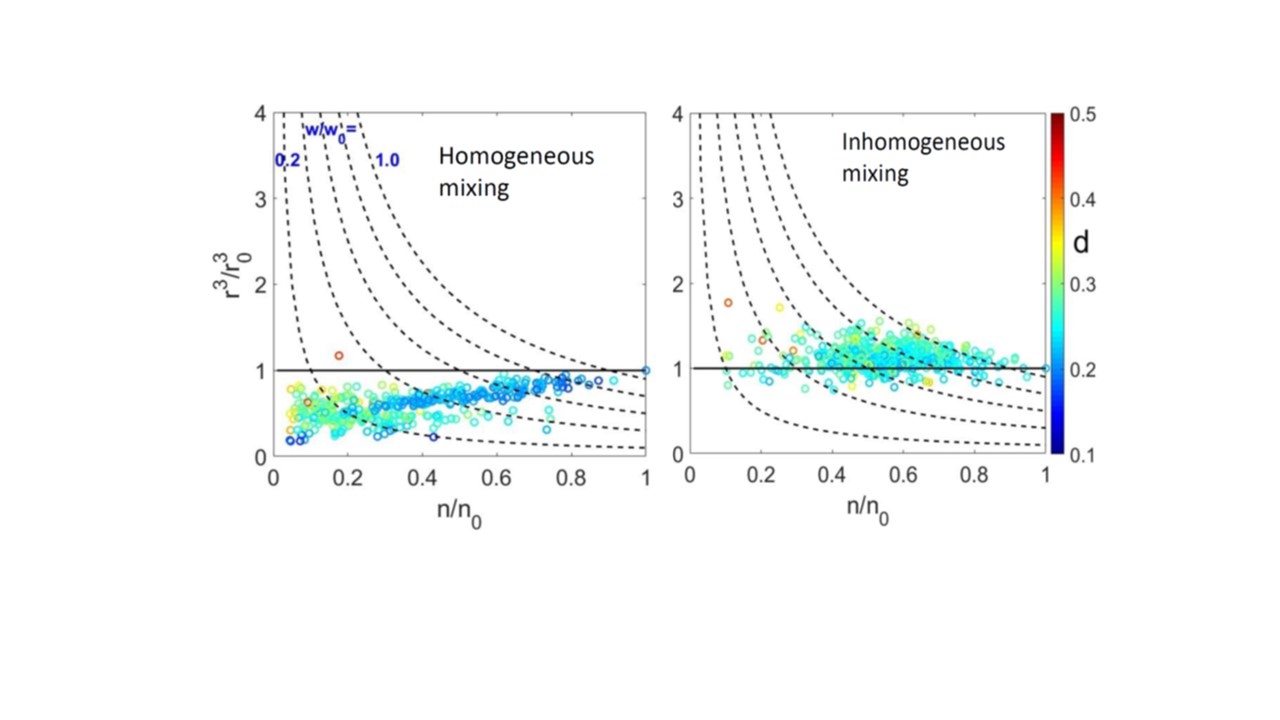Investigation of turbulent entrainment mixing with high-resolution digital holography
Submitter
Liu, Yangang — Brookhaven National Laboratory
Area of research
Cloud-Aerosol-Precipitation Interactions
Journal Reference
Science
Turbulent entrainment-mixing processes have been proposed to explain outstanding cloud physics problems such as spectral broadening and rain initiation. However, investigations of these processes have been limited by the lack of high-resolution measurements and the apparent dependence of entrainment-mixing mechanisms on sampling scale. This study takes advantage of the cm-resolution measurements from the latest digital holographic technology to examine the vertical variation of entrainment-mixing mechanisms and the underlying physics.
Impact
Entrainment-mixing processes remain poorly understood, especially in the aspects of vertical variation, mechanisms at high resolution, and parameterization for atmospheric models. This study is the first attempt to address these three topics synergistically, paving the way for further exploration of these critically important issues in future.
Summary
Marine stratocumulus clouds contribute significantly to the Earth's radiation budget due to their extensive coverage and high reflectivity. Although these clouds are not very thick, turbulent entrainment-mixing can generate significant variations with altitude in cloud droplet number concentration, size, and relative dispersion, thereby affecting the radiative properties of the cloud. In this study, the vertical variability of turbulent entrainment-mixing processes and in-cloud microphysical properties are studied within a warm marine stratocumulus cloud layer. Unique high-resolution airborne holographic measurements and in situ turbulence measurements made during the Aerosol Cloud Experiments in the Eastern North Atlantic (ACE-ENA) field campaign were utilized for this purpose. We find that entrainment mixing near cloud top is primarily inhomogeneous, whereby droplet sizes vary much less than cloud droplet concentrations, and near cloud base the mixing is homogeneous, whereby droplet sizes vary significantly. The observed mixing mechanisms can be explained by a modified droplet evaporation time scale that we developed, which considers local saturation deficit within a simple linear mixing model. The study reinforces the importance of turbulent entrainment-mixing processes and use of appropriate microphysical time scales in determining cloud microphysical processes.


